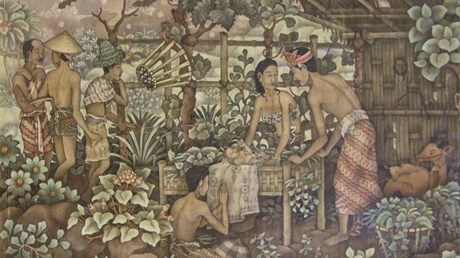Through Nativity art, the Word takes on flesh across diverse Eastern cultures.

Jesus was born in Asia. He was Asian. Yet the preponderance of Christian art that shows him at home in Europe has meant that he is embedded deeply in the popular imagination as Western.
The artists in this photo essay bring him back to Asia—but not to ancient Israel. They make the birth a local event, translating the story into their own cultural contexts. And so we see Jesus wearing, for example, the bone necklace of an Igorot chief (the Indigenous people of northern Luzon, Philippines) or greeted by water buffalo at a roadside pavilion in Thailand.
Some may object to depicting Jesus as anything other than a brown male born into a Jewish family in Bethlehem of Judea in the first century, believing that doing so undermines his historicity. But Christian artists who tackle the subject of the Incarnation are often aiming not at historical realism but at theological meaning.
By representing Jesus as Japanese, Indonesian, or Indian, they convey a sense of God’s immanence, his “with-us–ness,” for their own communities—and for everyone else, the universality of Christ’s birth.
However, it should be noted that not all Asians prefer Asian-specific representations of Christ. In fact, Christians in Asia tend to prefer the traditional European-style art with which many were introduced to the faith; they consider it the most authentically Christian. Part of this preference has to do with how closely tied certain Asian art styles and forms are to other religions, which most Christian converts want to distance themselves from.
That means that the Asian Christian artist who feels called to depict biblical themes, and to do so in an indigenized way, often does not find widespread support in their own ...
from Christianity Today Magazine
Umn ministry


.gif)

.gif)
.gif)
